In the last chapter we learned how to leave the dock. But how do we bring the boat back safely? The problem is: We do not want to crash into the jetty at full speed, but we do not have a brake on our boat. So which manoeuvre that we have already learned do we use to stop the boat … ? Right: by sailing up head to wind.
So we sail straight towards the wind. But into which wind do we shoot up too … ? Right, the true wind. We notice it on flags or how the boats are lying at the jetty. When they are only tied with one docking line at the front their bow should point into the wind. And that is the way we have to shoot up.
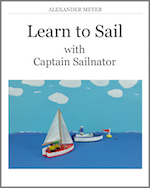 This online sailing course has also been published as ebook and paperback. For more information click here!
This online sailing course has also been published as ebook and paperback. For more information click here!
You can download the Ebook for example at:
iTunes UK & iTunes US | iBooks for iPad and Mac
Amazon.com & Amazon.co.uk | Kindle-Edition
Google Play | for Android
The paperback is available for example at:
Amazon.com | Amazon.co.uk
What did we learn about sailing up head to wind … ? Right: We approximate the destination in a distance of one and a half or one boat’s length parallel to the windward-leeward line. The finishing point is now the jetty. (Figure 109) If we are about one boat’s length away from the point to turn in the direction of the jetty we have to … ? Right, push the tiller away from us. (Figure 111) What kind of angle do we sail towards the true wind … ? Right, a 90 degrees angle.
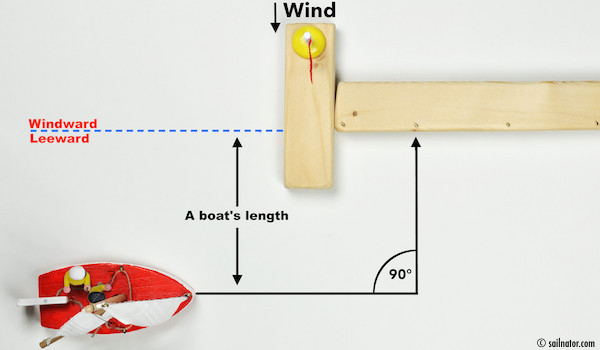
Figure 109: Approach on a line of a boat’s length distance parallel to the windward-leeward line.
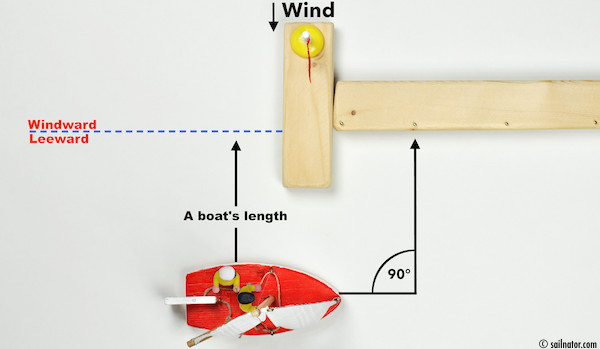
Figure 110: Command: “Ready to shoot up?” Answer: “Ready!”
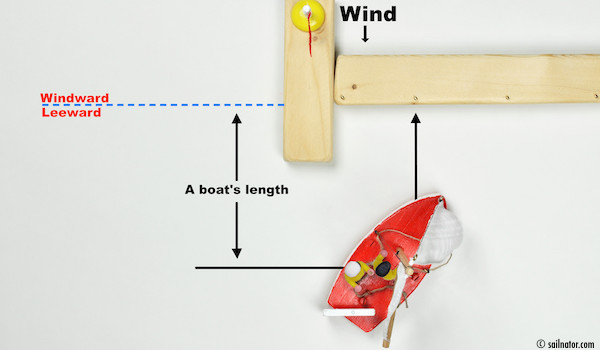
Figure 111: Command: „Release sheets!”
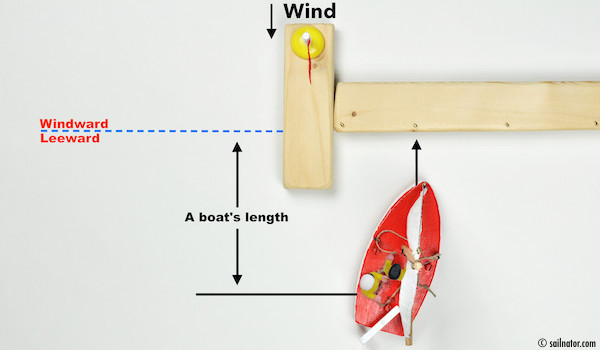
Figure 112: The tiller points to the boom!
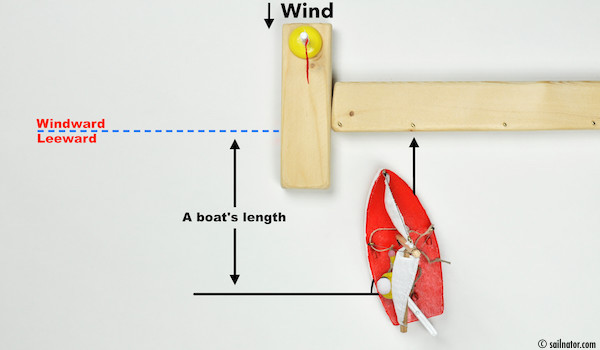
Figure 113: The tiller points to the boom!
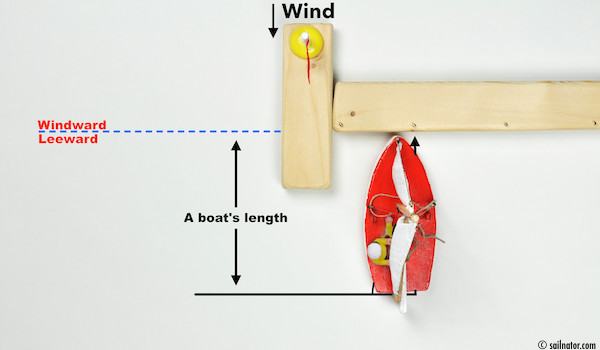
Bild 114: Command: „Tie docking line!”
How do we realise that we are exactly head to wind? Right, the boom is in the middle of the boat behind the mast. The tiller always points towards the boom. (Figure 112 & 113). It follows the boom to port side or starboard if it goes to one side till it settles down in the middle. (Figure 114)
We have now been slowed down by the wind and can safely head up to the jetty. The crew steps on the deck with the docking line in his hand. (It should be fixed at the bow) He steps over to the jetty once he can reach it. If the boat still has too much speed the crew can try to hold the boat away from the jetty by grabbing the forestay. For the beginning a fender in front of the bow is recommended.
If we did not get close enough to the jetty we should not ask our crew to jump over. That usually does not end well. We should better turn the bow through the wind early enough as long as we have the speed to do it. To support the turn in the right direction we back the jib. The helmsman changes the side and then we try the manoeuvre once again.
When we are back at the dock the sails have to be secured. Which sail first … ? Right, the jib. The jib has to be taken off the forestay. Some fold it and some furl it. The mainsail is often folded over the boom or furled and knotted beside it. Or it has to be taken off and folded. It is possible to secure the jib before we start the manoeuvre to keep the deck clear and to make it easier for the crew to step on the jetty.
Watch my stop motion video about berthing with Jenny and Tom →
Unfortunately the jetty is not always in such a perfect angle to the wind as in my figures. It is less important to hit the jetty at an angle of 90 degrees. It is more important that we always shoot up head to the true wind. When we head back to the jetty we always have to ask ourselves where the true wind comes from. We imagine the windward-leeward line and drive a boat’s length parallel to it. Then we shoot up head to wind, no matter which direction it comes from. You will get a feeling for the wind and your boat in time. The only way to learn it is to practice, practice and practice some more!
But what do we do when the wind blows in the direction of the jetty? Then we shoot up head to wind in a proper distance windward of the dock. When we are in irons we secure the mainsail. We tie it to the boom in a way so it does not interfere with our manoeuvre. And it should not give any resistance to the wind.
Then we bear away. Maybe we need to hold back the jib to do this. We head towards our destination and meanwhile the jib fills with wind. It now pulls us to the dock. If we have enough speed to reach the jetty we secure the jib too. The wind is going on to push us towards it. Now we check whether we tied up the mainsail properly. If not we gather too much speed to be able to berth safely. If you have misjudged your manoeuvre and you arrive at the jetty with too much speed, you can try and do a U with your boat in the marina and shoot up head to wind. You still need enough space to do this.
A boat is moored with foreline, forespring, aft spring and stern line. If there are posts available you use these and the jetty to moor your boat properly. Either with the bow or the stern facing towards the jetty. Important here is that the boat is properly fendered off to avoid any damage.
← Last chapter | Next chapter →
All chapters: Technical Terms | The theory behind sailing |Close-hauled | Beam reach | Broad reach | Sailing downwind | Tacking | Beating | Quick-turn | Sailing up head to wind | Man overboard | Jibing | Heaving-to | Leaving the dock | Berthing | Rules of the road 1 | Rules of the road 2 | Rules of the road 3 | Reefing | Capsizing